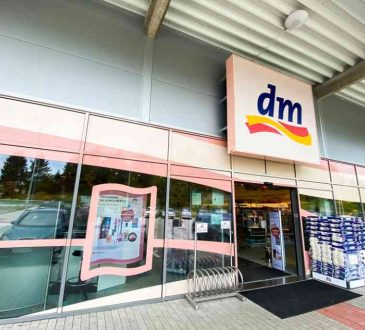Three Reasons Why Companies Need to Leverage L&D to Combat the Great Resignation

Something happened in 2021 that we hadn’t seen in more than half a century: 4.4 million Americans quit their jobs in a single month – September. This wasn’t a mere blip. November’s job gains were even slower, meaning that many of those recently unemployed Americans weren’t in a rush to get back to the grind.
The factors are many: some Americans accumulated more savings in 2020, when many travel and entertainment options were limited due to lockdowns, closures, and travel restrictions. On the emotional side, the stresses, adjustments, and uncertainty of 2020 left many people asking deep questions about their career paths.
In light of all that, 2021 has undeniably been a year of adjustment. With 2022 on the horizon, companies are tackling attrition by using unique Learning & Development (L&D) programs to attract — and retain — the best talent. Here are three reasons why this strategy is paying off.
- Your employees want to learn
Research shows that most employees (especially Millennials) believe that workplace L&D is important. In fact, 41% of employees consider their organization’s career advancement opportunities to be a “very important factor to their job satisfaction.” And yet, there’s a gaping hole here. 74% of employees reported that they feel as though they’re not reaching their full potential because their employer doesn’t provide ample developmental opportunities.The answer lies in supercharged L&D. Researchers for LinkedIn’s 2021 Workplace Learning Report found that 94 percent of employees surveyed would stay with a company longer if it invested more in professional development. Research shows that organizations offering solid professional development offerings have retention rates as much as 34% higher than average.
- Employees need to see that you care about their wellbeing
Historically, organizations that provide options for employee development have benefitted from jumps in sales and profits. One Gallup study of 49,495 business units across 45 countries found that “ninety percent of the workgroups studied had performance increases” to the tune of 10%-19% in increased sales and 14%-29% in increased profit. But when we’re talking about attracting talent and retaining current staffers amid the most lopsided labor market in decades, there has to be more to it. Prospective employees can get a good sense of a company’s culture just by looking at the L&D programs it offers. If everything on the menu is about productivity, time management, and industry-specific skills, it’s a fairly safe bet that the organization’s focus is solely on the bottom line.Of course, it’s important to cultivate skills that directly impact the job at hand. But if that’s all that’s offered, a prospective staffer can rightly expect that that’s all the company leadership cares about.
A different picture emerges when companies invest in education that is applicable elsewhere in life. Some offer programs that focus on work/life balance, or support for parents. Many engage in Diversity, Equity, & Inclusion training that goes far beyond the “checked box” approach; exploring histories and societal issues and creating greater contextual understanding. When current and prospective employees see that a company offers a wider range of training and growth opportunities, they develop deeper trust, pride, and loyalty toward their workplace and its leadership.
- Your company must go beyond compensation to show value
Millennials represent 35% of the labor force in the US. More than a third of all workers here were born between 1981-1996. As many researchers, reporters, and – yes – armchair scholars have pointed out, this generation is different from the ones that preceded it in many ways. Even before the pandemic hit, a study of 3,153 respondents conducted by FlexJobs found that this large subset of laborers highly values flexibility and unique benefits along with compensation rates. Both the employees you’re courting – as well as the ones you’re trying to keep on staff – base their decisions on more than just dollar figures. Research from PWC shows that Millennials in particular value opportunities to progress more than they value salary. 52% of PWC’s respondents said that career development opportunities are what attracted them to their jobs, and 65% said that they’d based their acceptances on what the organization had offered in professional development. As such, in a competitive marketplace you’re better off stepping up in L&D than trying to eke out a hiring win with a few extra bucks in salary.
The Bottom Line
Between recruiting costs, onboarding expenditures, and productivity losses, every unfilled position becomes more expensive by the minute. Historically speaking, it costs anywhere from six to nine months’ salary, on average, to replace a non-hourly employee – and the current labor shortage is driving these costs even higher.
Smart companies are stepping up with stronger L&D programs to entice new employees through the door, and to keep existing workers in their seats. The right L&D program shows that the company values its people, wants them to grow, and will support them long-term. It makes a compelling case for reciprocal loyalty between employer and employee – a major factor in facing down the Great Resignation.
Written by Jason Lavender.
Add CEOWORLD magazine to your Google News feed.
Follow CEOWORLD magazine headlines on: Google News, LinkedIn, Twitter, and Facebook.
This report/news/ranking/statistics has been prepared only for general guidance on matters of interest and does not constitute professional advice. You should not act upon the information contained in this publication without obtaining specific professional advice. No representation or warranty (express or implied) is given as to the accuracy or completeness of the information contained in this publication, and, to the extent permitted by law, CEOWORLD magazine does not accept or assume any liability, responsibility or duty of care for any consequences of you or anyone else acting, or refraining to act, in reliance on the information contained in this publication or for any decision based on it.
Copyright 2024 The CEOWORLD magazine. All rights reserved. This material (and any extract from it) must not be copied, redistributed or placed on any website, without CEOWORLD magazine' prior written consent. For media queries, please contact: info@ceoworld.biz
SUBSCRIBE NEWSLETTER








